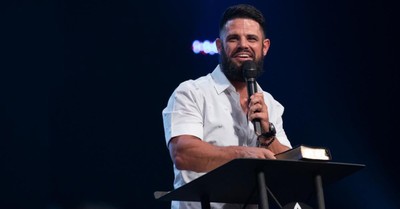It was a pagan world, outside the borders of the accepted disciplines and understandings of civilization. But spiritual. Deeply spiritual. The supernatural was everywhere, in places and days, people and events, filling their lives with images, symbols and ritual. The earth and all in it were sacred. Gods and goddesses roamed the landscape. The world of magic was embraced. But there was no God who sat in Heaven, and no knowledge of a Christ who had come to Earth.
Into this postmodern milieu, 1500 years before postmodernism was born, came Patrick, the patron saint and national apostle of Ireland (c. 5th century).
Patrick did not come to his task by choice. Kidnapped at the age of 15 from his father’s villa in Britain, he was enslaved in Ireland and made to serve as a shepherd. There he came into the fullness of the Christian faith and, after six years of prayer, finally made his escape. But upon reaching his homeland, he had a dream in which a man who seemed to come from Ireland handed him a letter titled “The Voice of the Irish” and at the same time heard the voices of those who lived “beside the Wood of Foclut, which lies near the Western Sea” asking him to “come back and walk once more among us.” Patrick wrote that he was “pierced to [his] heart’s core.”
Patrick returned to Ireland. Not as a slave, but as a missionary.
The legends surrounding Patrick are… well, legendary. He reportedly drove the snakes out of Ireland into the sea. Whether true or not, there are no snakes in Ireland to this day. Another legend is that he used the shamrock to explain the Trinity. There may be some truth to this as (pointing back to Patrick) the shamrock is the national flower of Ireland. He is said to have confronted and overpowered the druids, fasted for 40 days and nights on a holy mountain, and openly challenged a king by lighting a fire for an Easter celebration in open opposition to the edict that only one fire was to burn in the land—that for the pagan feast of Bealtaine.
What is most apparent is that Patrick looked for ways to connect the message of Christ to a pagan, but supernaturalized, world. In doing so, he imaginatively put himself in the position of the Irish. Looking for what they held in common, Patrick made it clear that he, too, embraced a world full of magic. As Thomas Cahill notes, the difference between Patrick’s magic and the magic of the Druids was that in Patrick’s world, “all beings and events come from the hand of a good God.” When Patrick arrived, the Irish were still practicing human sacrifice. Patrick made it clear that through Christ’s supreme sacrifice, such offerings were no longer needed. Patrick took an entire culture’s leanings toward the spiritual and led them to Christ.
During Patrick’s time, all who lived outside of the boundaries or walls of Rome were called barbarians (literally, “without the walls”), and were to be avoided at all costs. The Irish were barbarians. Cahill writes that Patrick was the first Christian missionary to a culture outside of Rome’s world: “The step he took was in its way as bold as Columbus’s.” Patrick simply wrote, “I came in God’s strength... and had nothing to fear.” As a result, Maire B. De Paor writes that Patrick “not only changed the course of Irish history but made Ireland the burning and shining light of barbarian Europe for the best part of the next thousand years.”
So on the day when “everyone is Irish,” let’s wish for it to be of the kind modeled by the saint whose name marks the day.
James Emery White
Sources
The Confession of Saint Patrick, translated by John Skinne. (There are only two surviving works that can be attributed to Patrick: Confessio (“Confession”) and Epistola (“Letter to Coroticus”).)
Thomas Cahill, How the Irish Saved Civilization.
Maire B. De Paor, Patrick: The Pilgrim Apostle of Ireland.
James Emery White, Serious Times (Downers Grove: Intervarsity Press).
About the Author
James Emery White is the founding and senior pastor of Mecklenburg Community Church in Charlotte, NC, and a former professor of theology and culture at Gordon-Conwell Theological Seminary, where he also served as their fourth president. His latest book, Hybrid Church: Rethinking the Church for a Post-Christian Digital Age, is now available on Amazon or from your favorite bookseller. To enjoy a free subscription to the Church & Culture blog, visit churchandculture.org where you can view past blogs in our archive, read the latest church and culture news from around the world, and listen to the Church & Culture Podcast. Follow Dr. White on Twitter, Facebook and Instagram at @JamesEmeryWhite.
The views expressed in this commentary do not necessarily reflect those of CrosswalkHeadlines.
James Emery White is the founding and senior pastor of Mecklenburg Community Church in Charlotte, NC, and a former professor of theology and culture at Gordon-Conwell Theological Seminary, where he also served as their fourth president. His latest book, Hybrid Church: Rethinking the Church for a Post-Christian Digital Age, is now available on Amazon or from your favorite bookseller. To enjoy a free subscription to the Church & Culture blog, visit churchandculture.org where you can view past blogs in our archive, read the latest church and culture news from around the world, and listen to the Church & Culture Podcast. Follow Dr. White on X, Facebook and Instagram at @JamesEmeryWhite.










